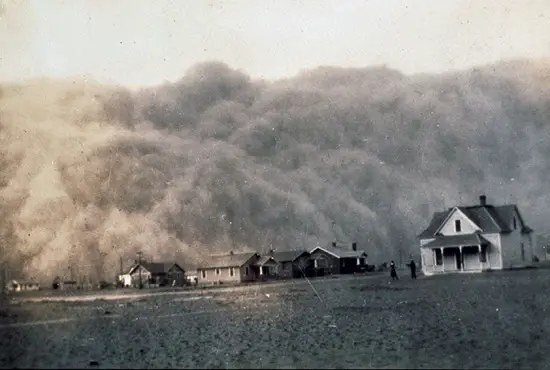The Dust Bowl of the mid-1930s was a catastrophic environmental event in the American Midwest, particularly affecting the Great Plains regions of Texas, Oklahoma, Kansas, Colorado, and New Mexico. This period was characterized by severe droughts that transformed fertile soil and farmland into dust. The lack of water led to decreased soil cohesion and plant death, making the land susceptible to erosion by wind and rain. Massive dust storms arose, carrying soil over vast distances, obscuring the sun, damaging property, and causing respiratory issues.
“Black Sunday,” a massive dust storm on April 14, 1935, epitomized the Dust Bowl’s severity. This event not only contributed to the region’s new moniker but also forced thousands of impoverished families, already struggling due to the Great Depression, to abandon their farms. In some areas, over 75 percent of the topsoil was lost to the winds.
The Dust Bowl’s impact was not solely due to drought; it was also exacerbated by agricultural practices. The advent of mechanized farming led to the removal of native grasses, whose roots previously held the soil together. Unbeknownst to farmers, these practices inadvertently contributed to the soil’s vulnerability.
The Dust Bowl prompted the U.S. government to take an active role in land management and soil conservation. Today, Great Plains farmers are more informed and collaborate with experts to implement sustainable farming practices that mitigate the effects of potential droughts.

